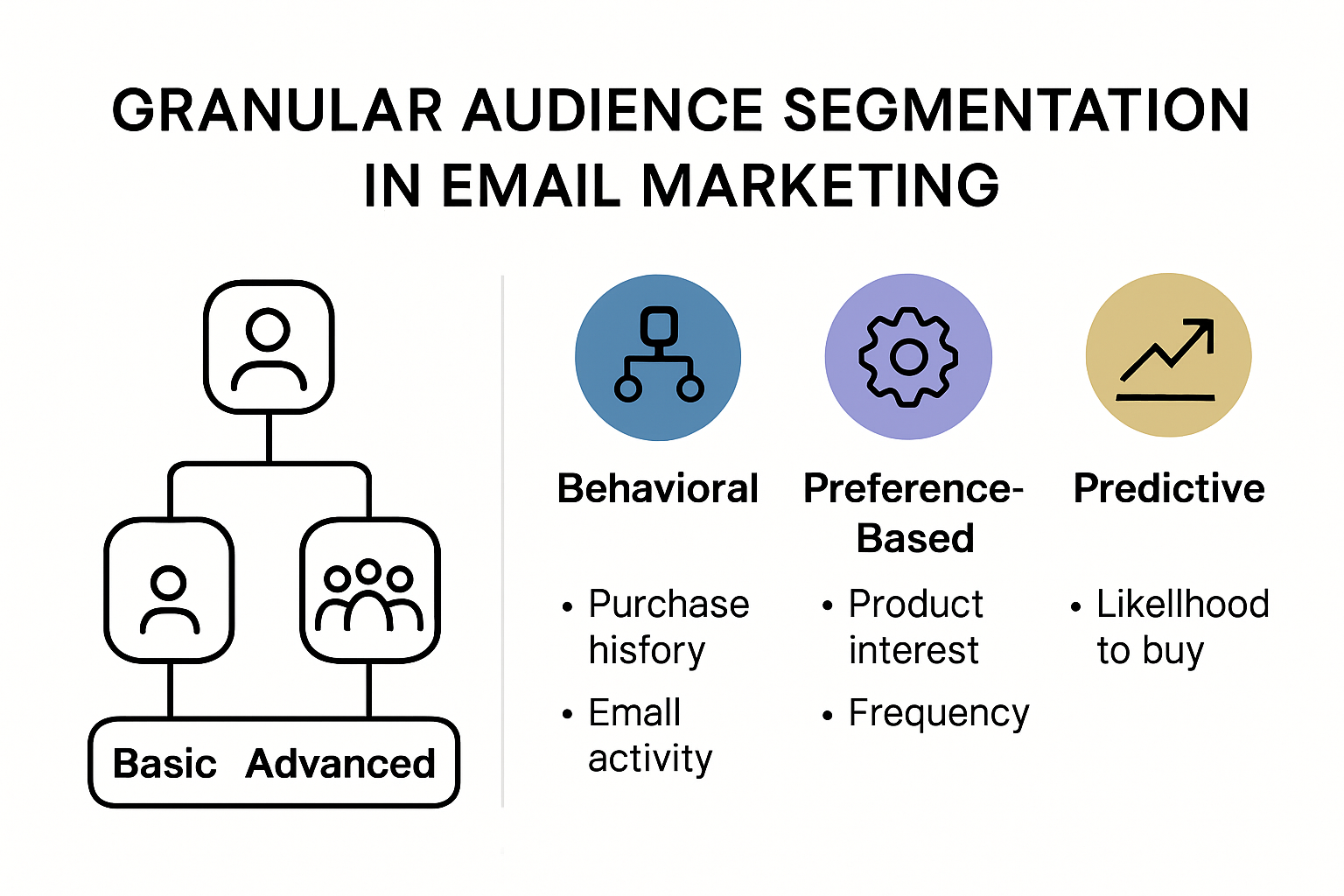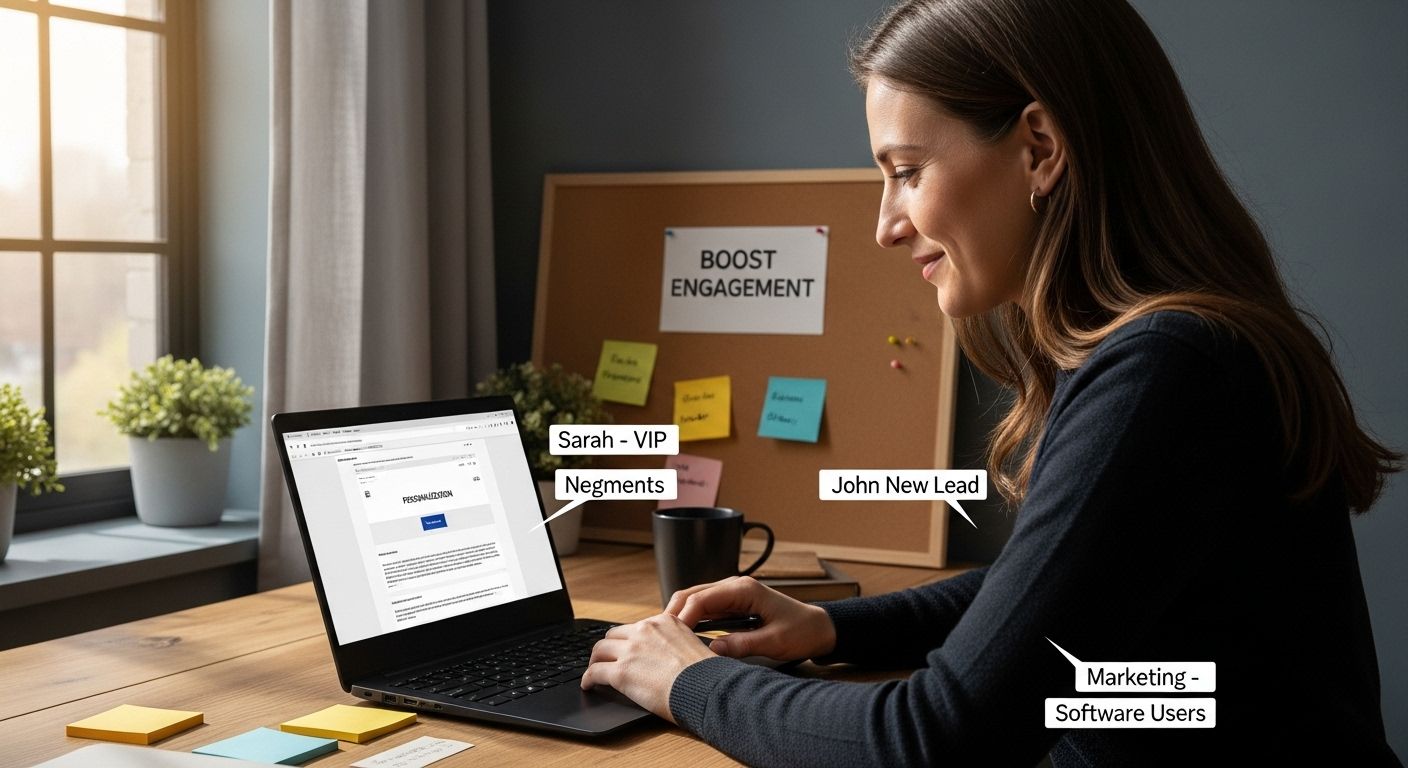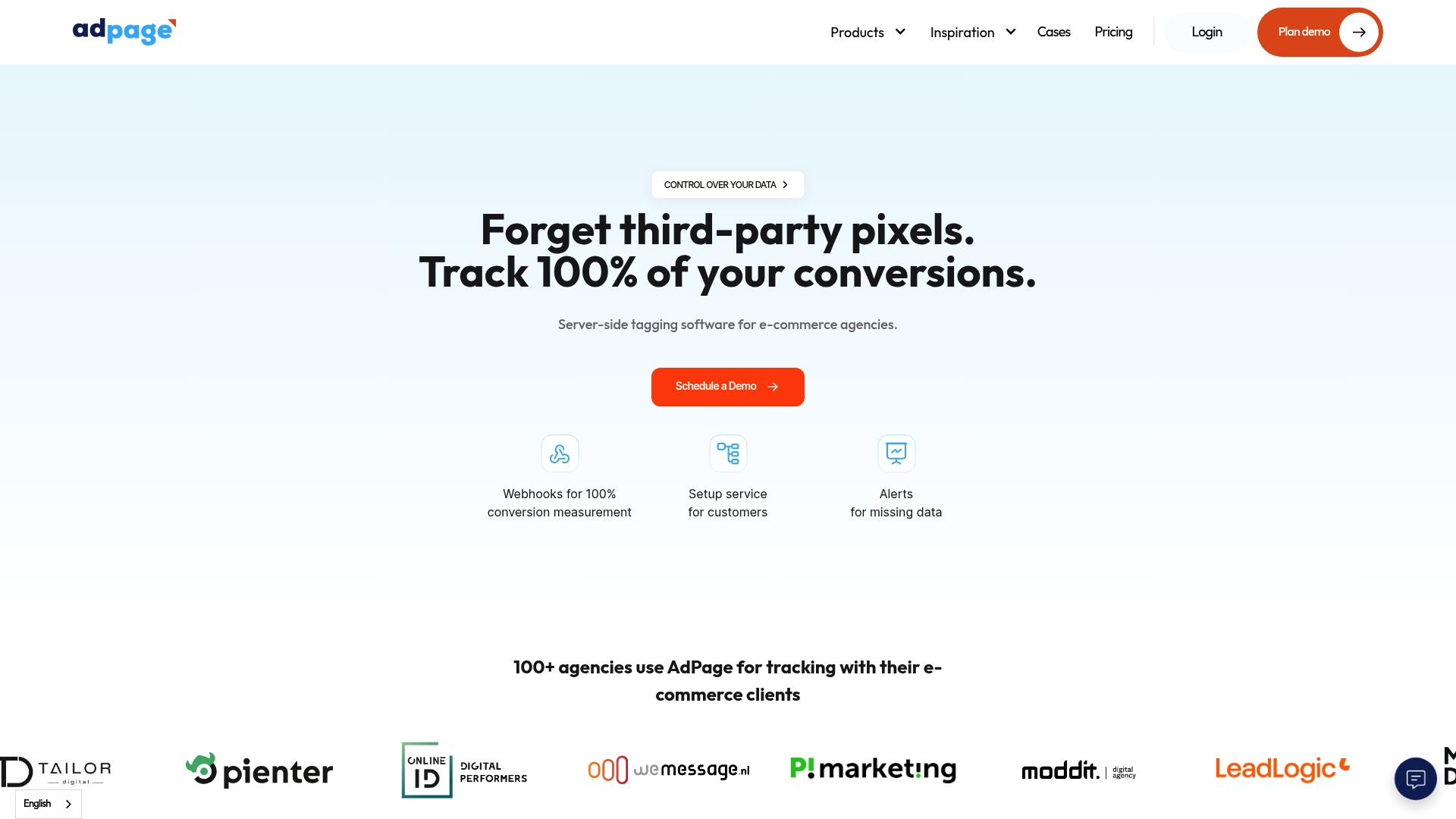Everyone talks about making email marketing better, but most messages still end up unread or binned within seconds. Shockingly, research shows subject lines with personalization can increase open rates by up to 20 percent, yet so many brands still treat their audience as one big group. The real jump in results this year comes not just from what you write, but from when you send and who you target with it.
Table of Contents
- Crafting Subject Lines That Convert
- Perfect Timing and Audience Segmentation
- Testing, Analytics and Continuous Optimization
- Leveraging Personalization to Boost Engagement
Quick Summary
| Takeaway | Explanation |
|---|---|
| Craft compelling subject lines | Use psychological triggers and personalization to enhance engagement. |
| Segment your audience precisely | Apply advanced segmentation techniques for better targeting. |
| Optimize sending times strategically | Schedule emails based on recipient habits for higher open rates. |
| Continuously test and analyze | Implement A/B testing to refine strategies iteratively. |
| Prioritize privacy in personalization | Balance personalization efforts with robust user privacy measures. |
Crafting Subject Lines That Convert
Subject lines are the gateway to email engagement, serving as the critical first impression that determines whether recipients will open or ignore your message. In 2025, crafting compelling subject lines requires a strategic blend of psychology, data insights, and precise targeting.
The Psychology of Persuasive Subject Lines
Understanding human psychology is fundamental to creating subject lines that truly convert. Our guide on email marketing strategies reveals that recipients make split-second decisions based on subject line content. According to research published in the Journal of Medical Internet Research, personalized subject lines can dramatically increase open rates by tapping into individual motivations and interests.
Effective subject lines leverage several psychological triggers. Curiosity is a powerful motivator that compels readers to click. Phrases that hint at exclusive information or create a subtle knowledge gap can spark immediate interest. For example, instead of a generic "Monthly Newsletter," a more engaging subject line might read "The Secret Strategy Our Top Clients Are Using Right Now."
Precision Targeting and Personalization
Data-driven personalization has transformed subject line creation from a generic approach to a highly targeted communication strategy. Modern email marketing tools enable marketers to segment audiences with unprecedented granularity, allowing for hyper-personalized subject lines that speak directly to specific user segments.
Key personalization strategies include:
- Name Integration: Using the recipient's first name creates an instant connection
- Behavioural Targeting: Crafting subject lines based on previous interactions and purchase history
- Contextual Relevance: Aligning subject lines with recent user activities or preferences
For instance, an e-commerce brand might send a subject line like "John, Your Perfect Summer Outfit Awaits" to a customer who recently browsed summer clothing collections. This approach demonstrates an understanding of individual preferences and increases the likelihood of engagement.
To make it easier to distinguish between key personalization techniques discussed, here is a summary table:
| Personalization Technique | Description | Example Subject Line |
|---|---|---|
| Name Integration | Adds recipient's first name for instant connection | "John, Your Perfect Summer Outfit Awaits." |
| Behavioural Targeting | Uses past interactions or purchase history | "Forgot Something in Your Basket?" |
| Contextual Relevance | Aligns with recent user activities or stated preferences | "Your Recent Browsing Inspired These Picks." |
Practical Techniques for Compelling Subject Lines
Crafting high-converting subject lines requires a systematic approach. Start by keeping them concise yet impactful - aim for 40 characters or less to ensure visibility across different devices. Use action-oriented language that creates a sense of urgency or excitement. Words like "Discover," "Unlock," and "Exclusive" can trigger psychological responses that prompt opens.
A/B testing remains crucial in refining subject line strategies. By systematically testing different approaches, marketers can identify the precise language and formatting that resonates most with their specific audience. Track metrics such as open rates, click-through rates, and conversion rates to continuously optimize your approach.
Remember that subject line effectiveness varies across industries and audience segments. What works for a tech startup might not work for a fashion brand. Continuous experimentation, deep audience understanding, and data-driven refinement are key to mastering the art of subject line creation in 2025.
Perfect Timing and Audience Segmentation
Achieving optimal email open rates requires a nuanced approach that goes beyond simple messaging strategies. Perfect timing and sophisticated audience segmentation have emerged as critical factors in email marketing success for 2025.
Understanding Email Consumption Patterns
Email engagement is not a uniform experience across all recipients. Learn more about advanced targeting techniques to refine your approach. According to research published in the Public Library of Science, controlling sending frequency dramatically impacts recipient attention and email effectiveness.
The Characterizing Reading Time on Enterprise Emails study revealed fascinating insights into device-specific reading behaviors. Desktop users demonstrate peak engagement around noon, while mobile users show increased interaction from evening hours through midnight. This data underscores the importance of strategic timing tailored to specific device preferences.
The following table summarizes key device-specific email engagement patterns referenced in this section:
| Device Type | Peak Engagement Time | Engagement Characteristics |
|---|---|---|
| Desktop | Around noon | Highest opens during work hours |
| Mobile | Evening through midnight | Increased interaction outside office hours |
Precision Audience Segmentation Strategies

Successful email marketing in 2025 demands granular audience segmentation. Advanced techniques move beyond basic demographic categorizations to create highly targeted communication ecosystems. Key segmentation approaches include:
- Behavioral Segmentation: Categorizing audiences based on past interactions, purchase history, and engagement levels
- Preference-Based Grouping: Creating segments reflecting individual communication preferences and interests
- Predictive Segmentation: Utilizing machine learning algorithms to anticipate future user behaviors
For instance, an e-commerce platform might create distinct segments for frequent buyers, occasional browsers, and potential reactivation targets. Each group receives precisely tailored content designed to maximize engagement and conversion potential.
Sophisticated Timing Mechanisms
Modern email marketing platforms now offer advanced scheduling capabilities that transcend traditional send times. Dynamic timing algorithms analyze individual user interaction patterns, automatically determining the most opportune moment for each recipient.
Effective timing strategies incorporate multiple variables:
- Individual user's historical open and interaction times
- Geographic time zones
- Device usage patterns
- Previous engagement metrics
Implementing these sophisticated timing mechanisms requires robust data collection and analysis. Marketers must invest in technologies that can process complex user interaction data in real-time, enabling hyper-personalized communication approaches.
The future of email marketing lies in understanding that timing is not just about selecting a specific hour, but about creating a responsive, adaptive communication strategy that respects individual user preferences and behaviors. By combining precise audience segmentation with intelligent timing mechanisms, brands can transform email from a generic communication tool into a highly personalized engagement platform.
Testing, Analytics and Continuous Optimization
In the rapidly evolving email marketing ecosystem of 2025, success hinges on a systematic approach to testing, analytics, and continuous optimization. Marketers must embrace data-driven strategies that go beyond traditional performance measurement.
Advanced Predictive Analytics and Modeling
Explore our comprehensive analytics troubleshooting guide to understand the nuances of modern email performance tracking. The emerging Ngram-LSTM Open Rate Prediction Model represents a groundbreaking approach to predicting email engagement. This innovative technique combines natural language processing and machine learning algorithms to forecast open rates with unprecedented accuracy.
Predictive models now leverage complex data points beyond traditional metrics. They analyze intricate patterns such as:
- Historical engagement trajectories
- Contextual content relevance
- Individual user interaction signatures
- Temporal commitment variations
These sophisticated models enable marketers to anticipate potential engagement challenges before they manifest, allowing for proactive strategy refinement.
Iterative Experimentation and A/B Testing.
Continuous optimization requires a robust experimentation framework. According to research on iterative experimentation methodologies, systematic A/B testing can generate up to 20% improvement in primary marketing metrics. This approach transforms testing from a sporadic activity into a structured, ongoing process of incremental enhancement.
Effective A/B testing in 2025 encompasses more than simple subject line variations. Marketers now experiment with:
- Micro-Segmentation: Testing responses across hyper-specific audience clusters
- Dynamic Content Adaptation: Evaluating real-time content personalization strategies
- Predictive Engagement Modeling: Assessing machine learning-driven content recommendations
Holistic Performance Measurement
Modern email marketing analytics transcend traditional open and click-through rates. Comprehensive performance measurement now includes:
- Conversion quality metrics
- Long-term commitment sustainability
- Audience lifetime value prediction
- Emotional resonance indicators
Technological advancements enable marketers to track granular interactions, understanding not just whether an email was opened, but how deeply it engaged the recipient. Machine learning algorithms can now interpret nuanced engagement signals, providing insights that traditional analytics platforms might overlook.
The future of email marketing optimization lies in creating a feedback loop of continuous learning. By combining predictive modeling, rigorous experimentation, and holistic performance measurement, marketers can develop email strategies that are not just reactive, but anticipatory. Each campaign becomes an opportunity to gain deeper insights, refine approaches, and create increasingly personalized communication experiences.
Leveraging Personalization to Boost Engagement
Personalization has transformed from a marketing buzzword to a fundamental strategy for driving email engagement in 2025. Discover advanced targeting techniques for e-commerce brands to elevate your communication approach.
The Science of Personalized Communication
Research published in PubMed reveals the complex psychological dynamics of personalized communication. According to the study, personalization positively influences message evaluation, but its effectiveness depends on individual factors such as privacy preferences and personal uniqueness.
The arXiv research on email recommendation optimization demonstrates that personalization goes beyond simply inserting a recipient's name. Advanced strategies involve analyzing individual activity levels, group behavior trends, and nuanced user preferences to create genuinely tailored content experiences.
Sophisticated Personalization Strategies
Effective personalization in 2025 requires a multifaceted approach that transcends basic demographic segmentation. Key strategies include:
- Behavioural Profiling: Creating dynamic user personas based on real-time interaction data
- Contextual Content Mapping: Aligning email content with individual user journey stages
- Predictive Preference Modeling: Anticipating user interests before explicit signals emerge
For example, an e-commerce platform might construct a personalized email journey that adapts in real-time based on a user's browsing history, past purchases, and emerging interest patterns. This approach transforms generic marketing communications into individualized conversation pathways.
Privacy-Conscious Personalization
As personalization techniques become more sophisticated, maintaining user trust becomes paramount. Research from the Public Library of Science emphasizes that segmentation and personalization must be balanced with robust privacy considerations.
Modern personalization strategies incorporate:
- Transparent data usage policies
- Granular consent mechanisms
- Easy opt-out and preference management tools
- Clear communication about data collection purposes
The most successful personalization approaches in 2025 will be those that provide genuine value while respecting individual privacy boundaries. Marketers must view personalization as a collaborative process where users actively participate in shaping their communication experiences.
By combining advanced data analysis, machine learning algorithms, and a deep understanding of individual user preferences, brands can create email communications that feel less like mass marketing and more like genuine, tailored conversations. The future of email engagement lies not in volume, but in precision and relevance.

Frequently Asked Questions
What strategies can I use to craft compelling email subject lines?
To craft compelling email subject lines, utilize psychological triggers, keep them concise (aim for 40 characters or less), and incorporate personalization such as the recipient's name or their previous interactions. Action-oriented language, like "Unlock" or "Discover," can also enhance engagement.
How important is timing when sending marketing emails?
Timing is crucial for email open rates. Understanding your audience's email consumption patterns and scheduling your emails to coincide with their peak engagement times can significantly improve open rates. Analytics tools can help identify optimal sending times based on user behavior.
What methods can I use for audience segmentation in email marketing?
Effective audience segmentation methods include behavioral segmentation based on past interactions, preference-based grouping that reflects individual interests, and predictive segmentation using machine learning to anticipate future behaviors. This allows for more tailored email content that resonates with each group.
How can I ensure that my email personalization efforts respect user privacy?
To maintain user trust while personalizing emails, implement transparent data usage policies, allow easy opt-out options, and provide granular consent mechanisms. It's essential to communicate clearly about how data is collected and used to sustain respectful and privacy-conscious personalization.
Unlock Seamless Email Performance with Advanced Data Accuracy
Struggling to get your emails opened despite personalizing subject lines and perfecting your send times? Many brands put in the effort but still face disappointing open rates due to unreliable data and gaps in tracking. The article dives into how personalisation, strategic timing, and segmentation are essential for engagement. However, without the right data foundation, even the most sophisticated strategies cannot reach their full potential.

It is time to bridge the gap between intelligent email strategies and flawless result tracking. With AdPage, you ensure every email open and conversion is counted. Our platform offers powerful server-side tagging, consent management, and GDPR-compliant visitor identification so you get 100% accurate analytics with no hidden data loss. Ready to gain deeper insights and boost your campaign effectiveness? Take the next step and discover how AdPage can transform your email marketing now. Do not let a lack of reliable data hold you back from higher open rates and stronger results.



.png)
